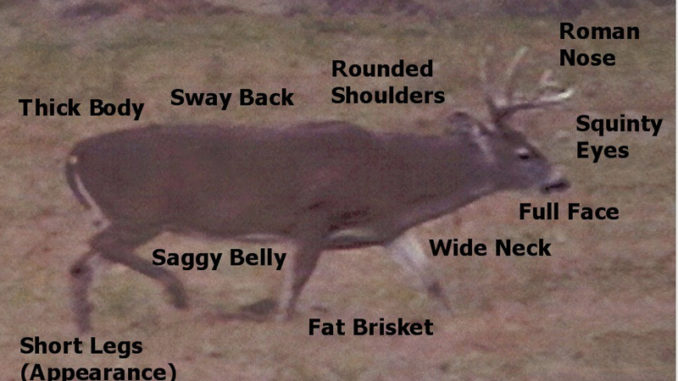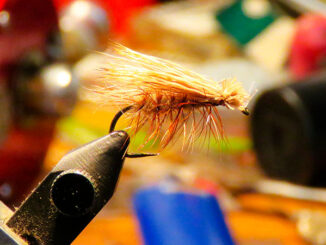
Don’t look at rack size to estimate age of buck
Many hunters have been in their deer stand and “something” steps into a field or shooting lane. The typical scenario is a buck on the prowl, usually at a considerable distance and in low light conditions. The hunter’s eyes immediately go to the rack. But that’s not the best way of aging a buck.
“The rack has little to do with whether or not a deer has reached its potential growth,” said quality deer land manager Leslie Smith from Hampton, S.C. “Many hunters see what they think is a trophy deer because it’s got a visible rack over it’s head.”
A deer typically reaches its best antler maturity at somewhere in the 5 ½-year-old range. So learning to distinguish body features that classify a deer at it’s maximum potential is a much more reliable way of aging a buck than simply judging by its rack.
Check out the accompanying photo, which Smith took at a distance of 200 yards under low light conditions. It’s easier to judge this trophy deer based on it’s body features, especially since its rack isn’t clearly visible. In comparison, a trophy deer shares many characteristics with a middle aged man. Smith describes each characteristic individually to put together a full picture.
Check out these traits to help when aging a buck
Thick Body – “The most reliable characteristic is a full, thick, mature body which identifies this animal as a trophy buck based on sizeable body weight,” he said.
Sway Back – “Age and maturity, as well as a big gut, give this deer a slight sway in its back.”
Rounded Shoulders – “One trait that distinguishes this animal from a husky younger deer are rounded shoulders. It also indicates heavy body weight.”
Roman Nose – “A hooked or round nose, also referred to as an Aquiline nose, is derived from the fullness of the face but also makes reference to a fierce fighter.”
Squinty Eyes – “This is also caused by higher body mass. Eye lids may even look puffy.”
Wide Neck – “This photo was taken during the rut, which further increases this buck’s size based on its swollen neck. The neck minimally decreases in size from the shoulder to the head.”
Fat Brisket – “These are ‘man boobs,’ another place weight accumulates.”
Saggy Belly – “Years of consuming ‘grain products’ have the same effects on deer and humans.”
Short Legs – “Overall this deer’s legs are normal sized. But they look short when compared to the size and girth of the body.”
After a full analysis, Smith deemed the deer was definitely a shooter.




